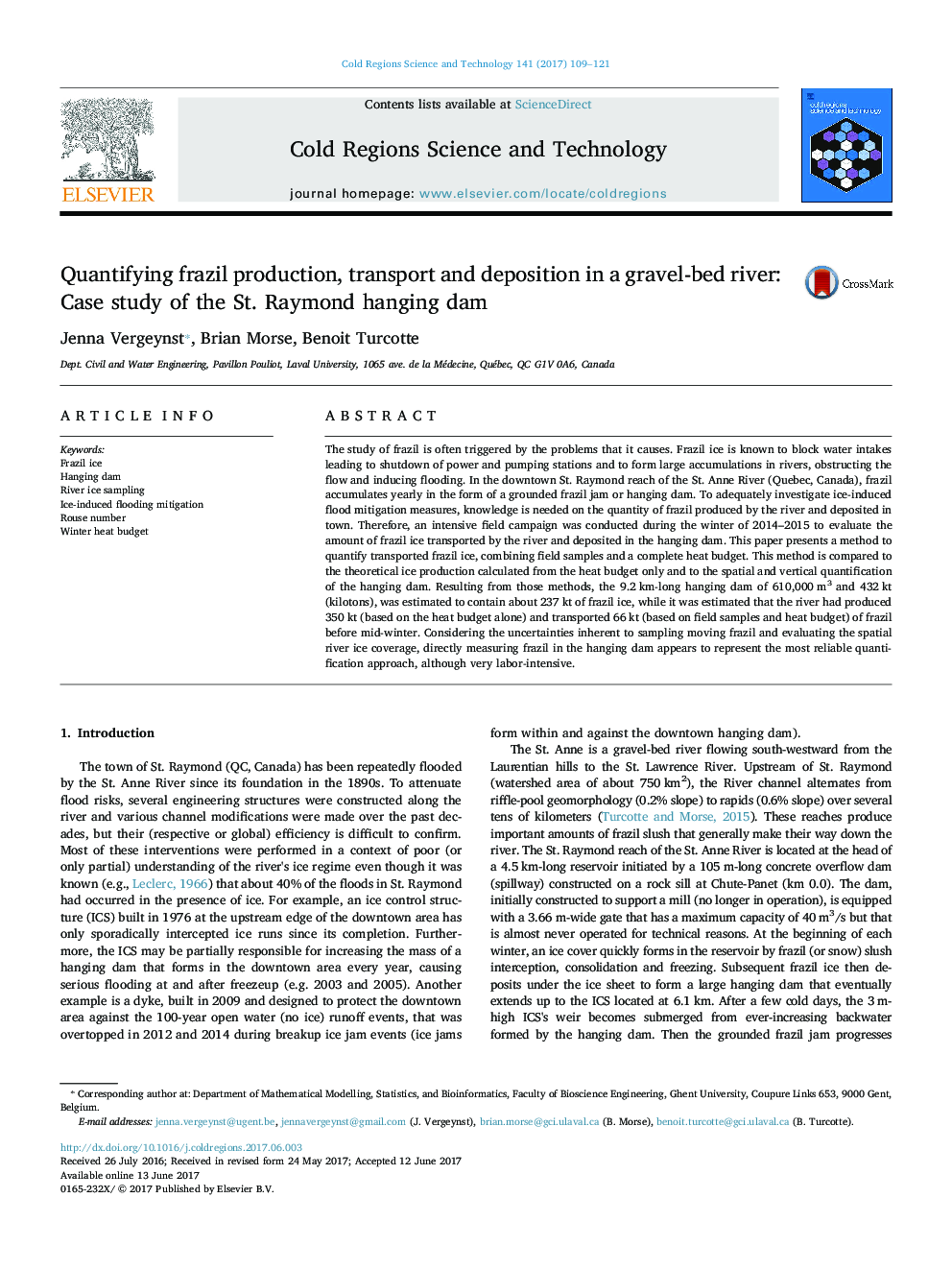| Article ID | Journal | Published Year | Pages | File Type |
|---|---|---|---|---|
| 5779362 | Cold Regions Science and Technology | 2017 | 13 Pages |
Abstract
The study of frazil is often triggered by the problems that it causes. Frazil ice is known to block water intakes leading to shutdown of power and pumping stations and to form large accumulations in rivers, obstructing the flow and inducing flooding. In the downtown St. Raymond reach of the St. Anne River (Quebec, Canada), frazil accumulates yearly in the form of a grounded frazil jam or hanging dam. To adequately investigate ice-induced flood mitigation measures, knowledge is needed on the quantity of frazil produced by the river and deposited in town. Therefore, an intensive field campaign was conducted during the winter of 2014-2015 to evaluate the amount of frazil ice transported by the river and deposited in the hanging dam. This paper presents a method to quantify transported frazil ice, combining field samples and a complete heat budget. This method is compared to the theoretical ice production calculated from the heat budget only and to the spatial and vertical quantification of the hanging dam. Resulting from those methods, the 9.2Â km-long hanging dam of 610,000Â m3 and 432Â kt (kilotons), was estimated to contain about 237Â kt of frazil ice, while it was estimated that the river had produced 350Â kt (based on the heat budget alone) and transported 66Â kt (based on field samples and heat budget) of frazil before mid-winter. Considering the uncertainties inherent to sampling moving frazil and evaluating the spatial river ice coverage, directly measuring frazil in the hanging dam appears to represent the most reliable quantification approach, although very labor-intensive.
Keywords
Related Topics
Physical Sciences and Engineering
Earth and Planetary Sciences
Earth and Planetary Sciences (General)
Authors
Jenna Vergeynst, Brian Morse, Benoit Turcotte,
